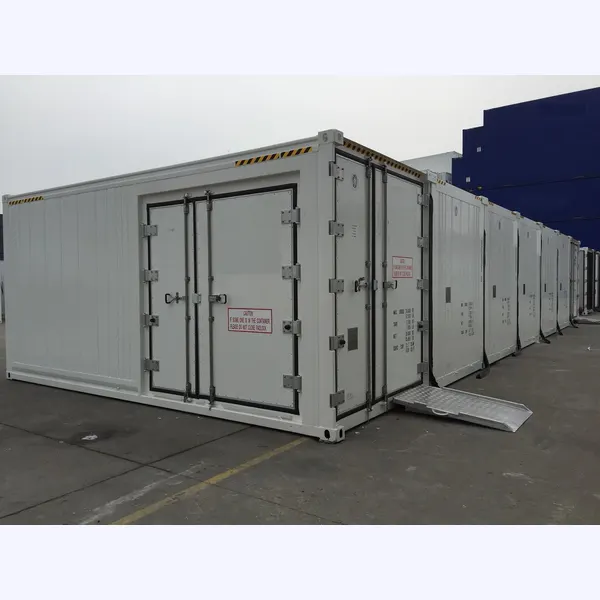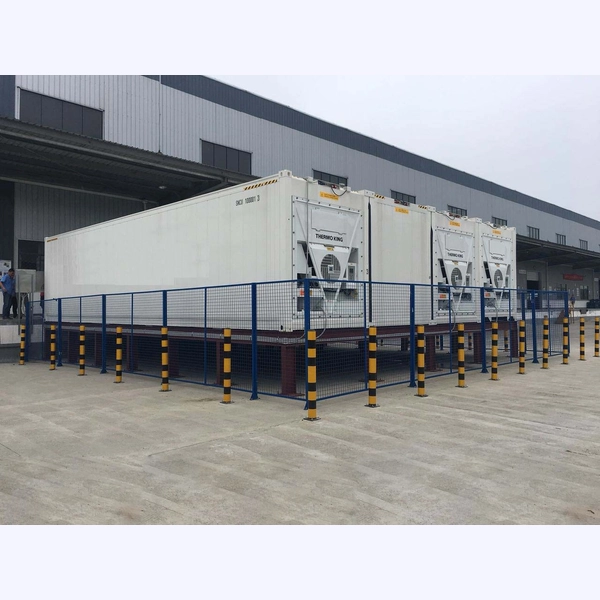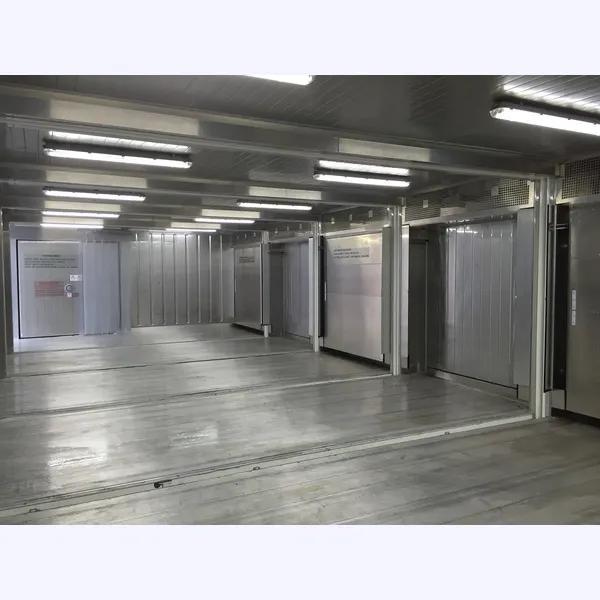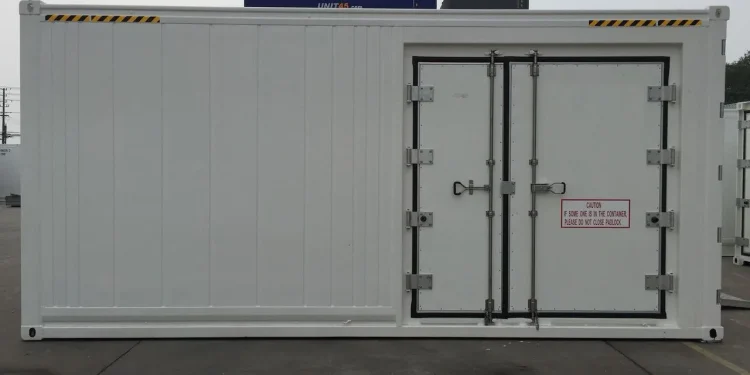A cold storage warehouse functions to maintain the quality of fresh produce, frozen foods, pharmaceutical products, and other goods that require storage at specific temperatures. Unlike household refrigerators, these cold storage facilities are designed with much larger space which allows them to store a significant volume of products.
With this functionality, cold storage warehouses have become essential operational facilities for businesses in logistics, agriculture, food and beverage, chemical, pharmaceutical, and event industries. For example, in the food and beverage sector, cold storage plays an important role in preventing spoilage of perishable products.
While it is true that storing food and beverages at low temperatures does not completely eliminate microorganisms, cold storage warehouses significantly slow down their growth so that products remain fresh and in good condition for longer periods.
Another example is vaccine storage such as for COVID 19 vaccines. Vaccines can be damaged and rendered ineffective if exposed to room temperature for an extended time. This is why vaccine storage requires a facility specifically set to cold conditions.
Traditionally, building a cold storage warehouse involves a long construction process. Fortunately, innovations have led to the emergence of cold storage containers as a faster and more flexible solution.
Based on refrigerated containers, cold storage containers can consist of a single unit, a double unit, or a combination of multiple refrigerated containers designed to function like a warehouse. Originally developed for transportation and storage, they have evolved into large scale storage facilities capable of holding substantial volumes of products.
Compared to conventional cold storage warehouses, cold storage containers can be deployed much faster. If you need a cold storage facility on short notice, a cold storage container is an ideal option. Its design is simple and the entire steel structure from the frame to the walls is made of durable steel.
In terms of durability, ISO certified reefer containers are built to withstand tough environments and extreme weather conditions which makes them reliable for long term storage.
If you are interested, you can contact Tradecorp to order a unit. Since 2014, Tradecorp Indonesia has been serving as an international company in Indonesia providing operational support for businesses and field projects through shipping containers, offshore DNV containers, ISO tank containers, modified containers, modular prefabricated buildings, and light gauge steel construction.
For more details on container based cold storage warehouse models, features, and types, explore the sections below.
Daftar isi
Examples of Cold Storage Warehouses from Containers




Features of Container-Based Cold Storage Warehouses
A container-based cold storage warehouse retains the key features of a refrigerated container, which include:
- Stainless steel interior.
- Carrier, Daikin, or Thermo King refrigeration units with temperatures reaching as low as -40 °C.
- Flat aluminum anti-slip flooring.
- 220V LED lighting.
- Internal door alarm.
- Sliding strip curtain.
- Thermostat
These features provide an overview of what is typically available in a reefer container that has been converted into a cold storage container. Additional features can be included upon customer request.
Types of Container-Based Cold Storage Warehouses
Depending on its function, a container-based cold storage warehouse can be classified into four main types: chiller, freezer, blast chiller, and blast freezer. Each type has a distinct operating method, as explained below.
1. Chilled Room
A chilled room is designed to operate at temperatures between 0°C and 10°C. Equipped with a chiller system, it is ideal for storing red meat, poultry, fish, shellfish, eggs, and dairy products. Chilled rooms in cold storage containers are commonly used by fresh food suppliers and retailers who want to maintain product quality.
2. Freezer Room
A freezer room is designed to freeze products at temperatures ranging from -15°C to -20°C. This temperature setting allows meat, fish, and other food products to be stored for extended periods while preserving their quality.
3. Blast Chiller
A blast chiller features rapid cooling technology that can lower product temperatures to between 1°C and 4°C in a short period of time. This speed of cooling distinguishes it from a standard chilled room.
It is particularly useful for cooling meat, poultry, fish, shellfish, eggs, and dairy products immediately after production or processing, helping to preserve freshness before distribution or long-term storage.
4. Blast Freezer
A blast freezer uses high-speed freezing equipment to lower temperatures to between -35°C and -40°C. This ultra-fast freezing process helps maintain the freshness, texture, and nutritional value of raw materials or processed products.
Blast freezers are widely used in the seafood, meat, and frozen food industries to ensure products reach consumers in excellent condition.
Types of Cargo and Capacity of Container-Based Cold Storage Warehouses
Almost all types of cargo can be stored in a cold storage warehouse built from containers. Below is an overview of common cargo types and their recommended storage temperatures:
| Cargo Types | Cold Storage Temperature |
| Fresh produce (fruits and vegetables) | 0°C to 4°C |
| Dairy products (milk, cheese, yogurt) | 0°C to 4°C |
| Meat and poultry | (-1°C) to 2°C |
| Seafood (fish and shellfish) | (-1°C) to 2°C |
| Frozen foods (vegetables, ice cream, meat) | (-18°C) to (-24°C) |
| Pharmaceuticals (medicines and vaccines) | 2°C to 8°C |
Refrigerated containers converted into cold storage warehouses are generally available in standard and high cube sizes. Each category is further divided into three dimensions: 10 feet, 20 feet, and 40 feet. Different dimensions offer different storage capacities, as detailed below.
10ft Reefer Container, Capacity up to 5 Tons
| 10ft Reefer Container Dimensions | Details |
| Length | 2.991 meters |
| Width | 2.438 meters |
| Height | 2.591 meters |
| Gross Weight (Container + Cargo) | 10.00 tons |
| Tare Weight | 3.08 tons |
| Payload Capacity | 6.92 tons |
| Volume | 11.86 cubic meters |
20ft Reefer Container, Capacity 10 to 20 Tons
| 20ft Reefer Container Dimensions | Details |
| Length | 6.058 meters |
| Width | 2.438 meters |
| Height | 2.591 meters |
| Gross Weight (Container + Cargo) | 24.00 tons |
| Tare Weight | 3.66 tons |
| Payload Capacity | 20.34 tons |
| Volume | 26.00 cubic meters |
40ft Reefer Container, Capacity 50 to 100 Tons*
| 40ft Reefer Container Dimensions | Details |
| Length | 12.192 meters |
| Width | 2.438 meters |
| Height | 2.591 meters |
| Gross Weight (Container + Cargo) | 34.00 tons |
| Tare Weight | 5.86 tons |
| Payload Capacity | 28.14 tons |
| Volume | 57.4 cubic meters |
Note: A single 40ft reefer container can be combined with other 40ft reefer units to achieve a total storage capacity ranging from 50 to 100 tons.
Why Choose Tradecorp for Your Cold Storage Container Needs?
Looking for a cold storage container is not just about purchasing a refrigerated unit, you need a supplier who truly understands your operational needs. Tradecorp is a trusted partner for providing cold storage warehouses tailored to your business requirements.
1. Extensive Project Experience
Since 2014, Tradecorp has served a wide range of industries, including logistics, agriculture, food and beverage, pharmaceuticals, and events. We have supplied accommodation and operational facilities for mining sites in Sumatra and Kalimantan, and have been entrusted to provide facilities for major international events such as the Jakarta Formula E and the 2018 Asian Games.
2. Premium-Grade Materials
Every product we supply is made from premium-quality steel that can withstand extreme weather conditions and has been ISO certified. In addition to the structural and wall materials, our cold storage containers are equipped with internationally recognized refrigeration units capable of functioning as chillers or freezers.
3. Built by Professional Teams
Our team of engineers and technicians designs each unit according to your specific requirements, whether for storing fresh food products, vaccines, or chemical industry materials.
4. Fast Process and Integrated Services
From the initial consultation and specification planning to assembly, delivery, and installation, everything is handled in one streamlined process. This ensures you can start operating your cold storage warehouse quickly without the hassle of coordinating multiple vendors.
5. Transparent and Fair Pricing
We believe in transparency. Every cost calculation is provided in detail from the very beginning, so you know exactly how much investment is required and the value you will receive in return.













